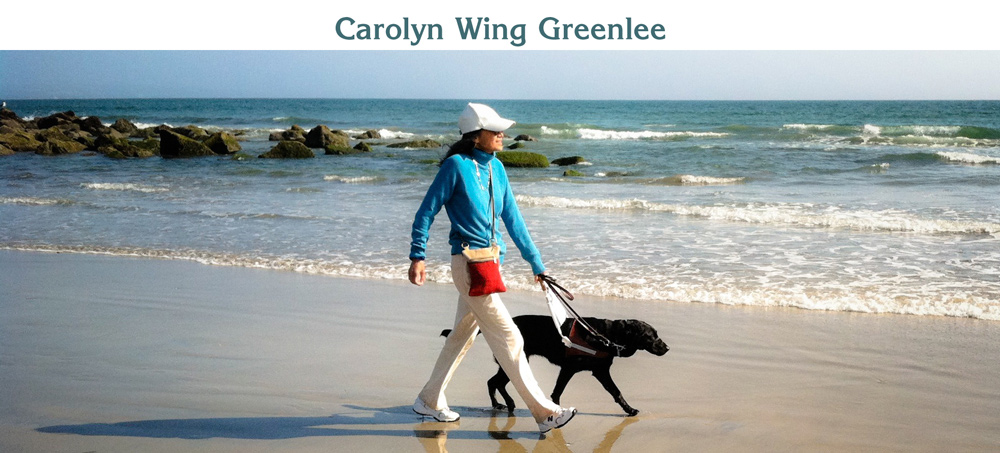One of the first gifts my father gave me was a twin lens Yashica camera. It took black and white pictures because, when I was a child back in the Fifties, all they had was black and white film. He, himself, was rarely without a camera, and he assiduously documented the family—curlers and all.
When I was a young mother, I found a fresh reason to take pictures—my new baby son John. He was so beautiful that the nurses called him “Joan” by mistake. One day I took a few pictures of the neighbor girl who babysat for me. She liked them so much she hired me to shoot her wedding. That’s how I became a professional photographer.
I loved taking pictures. The Pop Art movement was in a wild, creative explosion when I was in college. I loved the idea of recognizing the graphic splendor of a fried egg in a black frying pan. I started looking for the abstract in the everyday. Soon I was shooting for a greeting card company and my stock photography was enlarged to huge and sold as wall decor for a commercial interior decorating company.
For thirty years I enjoyed this freelance work in which potential pictures were everywhere I looked. I loved sharing those images with others, and had the privilege of having a number of shows at museums and galleries.
One day I was invited to take pictures backstage for an article on A Chorus Line that was being covered by Jade Magazine where I worked as writer, assistant editor, and photographer. How exciting to meet Bayork Lee and capture images of dancers warming up before walls of mirrors! Once in a lifetime shots. I dashed home to develop and print them only to find that they were all out of focus—every single one.
There was no auto-focus back then, but I continued to shoot; I just had to be more careful matching the halves of the split image viewfinder and it took longer to focus. When auto-focus came out, I dived in again.
In 1990, my father bought me matching Nikon 8008s and a set of autofocus lenses. I was in heaven. I soon knew all their controls and could select aperture, switch swiftly from macro to 2x teleconverter on a 600 mm lens. I could shoot from the hip and get exactly what I expected. I loved those cameras. With them, I could easily share my vision of the world.
But now, with only 4% of my vision left, and the economic choice to leave the world of film and color processing, I have entered the digital world with a Nikon that has never become a part of me. I can’t see the words on the display on the back. I can’t read the dials on the top. I can’t change the aperture with a twist of a ring or check depth of field with a preview button. I can’t see the edges of the frame. I can’t tell what’s in focus or even sometimes what I’m looking at, and often I can’t find the viewfinder at all. I have to stick my finger in it and then bring it up to my eye. I still love SLR cameras (single lens reflex, where what you see through the viewfinder is what the lens is seeing), but most of the time I use a little point-and-shoot because the large screen on the back gives me an idea of what I’m getting, though in bright light outside all I see is a reflection of my face and I’m insecure whenever I try to change any of the settings.
Nevertheless, I still keep shooting. There are many blind photographers. One of my classmates at guide dog school was down to light and shadow, but he still took pictures. He wanted to show Muir Woods to the folks back home, so he held up his cell phone in the direction that seemed good to him and pushed the button. “It focuses itself,” he explained. “How can I go wrong?”
I’m grateful I can still see color (though I have lost some color discernment), shape, and drama. I thank God every day because I get to look at so many stunning and beautiful things. I take photos so I can remember what I saw, studying them on my computer screen, taking the time to soak in the details that I missed. There aren’t many art-worthy pictures now, but I revel in serendipitous colors, such as the blue and yellow of the photo of Dan and greyhounds walking with my dad on the streets of my hometown at night. I love the yellow rectangle behind their heads, the animated conversation (Dan was probably talking loudly because my dad was so deaf), the shadows under their feet, the receding blue of the quiet street stretching behind them. It’s probably not in focus and the resolution isn’t very high, but I have that moment, and it gives me pleasure every time I look at it.
[slideshow id=”4″ width=”630″ height=”480″]


0 Comments